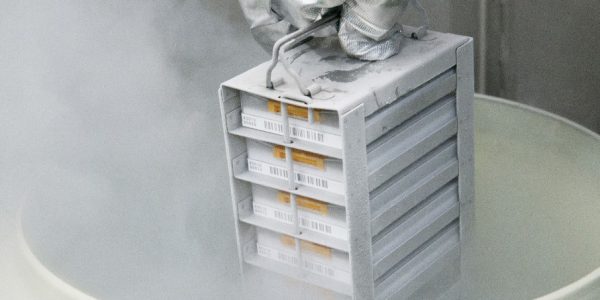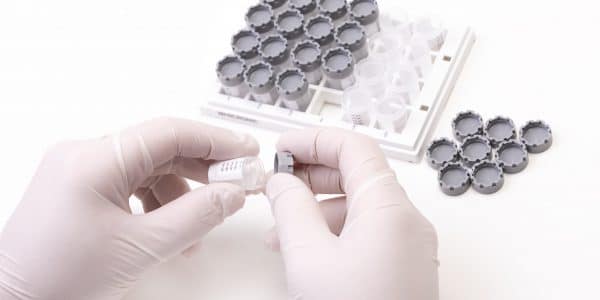

Effective Sample Storage at Various Temperatures
For the storage of samples, several subjects are important to consider, like sample traceability, the type of labware used and the storage temperature. In this blog post we go deeper into the latter topic, the storage of samples in various temperatures. We will discuss different storage temperatures, short-term and long-term storage of samples, what labware material is useful at what temperatures and what tube sizes can be considered.
Various storage temperatures
Based on how long the sample needs to be stored and what kind of sample you are storing, it is important to know at which temperature the sample will best be preserved. Samples can be stored either in ambient temperature (+20°C), in the refrigerator (+4°C), in the freezer (-20°C), in the ultra-low freezer (-80°C) or in cryo tanks (-150°C and lower). Most long-term storage happens in the ultra-low freezer or in a cryo tank, the other options are mostly used for short-term storage. Exceptions can be made when, for example, tissue is preserved in a fixative solution like paraffin wax.
Short-term and long-term storage of various sample types
As describe above, samples can be stored in several different conditions. We are going to discuss both short-term and long-term storage. For short term storage, most samples should be at least frozen. What can be stored at ambient temperature is tissue preserved in a fixative solution, hair, nails or blood on a filter paper. However, to preserve the hair, nails or the blood for the long-term, then it is advised to store them in a freezer to maintain sample quality. Samples that should at least be stored in a refrigerator for short-term are: fresh tissue, organs, DNA, RNA and other active proteins. Fresh biofluids can be short-term stored in the refrigerator, but if the samples are needed in a component study later on it is advised to keep them in the freezer for short-term storage. If the research is being done at a later time and the biofluids will be stored for the long-term, it is advised to keep them in an ultra-low freezer or cryo tank.
Samples that should always be kept in a frozen enviroment even for short-term storage are: steroid hormones, nucleic acids and biofluids that are used for a component study. Cells can be kept for short-term storage in the freezer when a components study is being held, however if the cells need to be kept viable and functional they should always be kept in a cryo tank, regardless if it is for short-term or long-term. When the cells are not kept in the cryo tank the possibilty that the cells may no longer be viable could arise. Samples that can be stored for short-term in either ambient temperature or in the refrigerator should be kept in a freezer when storing them long-term such as: tissue, organs, blood, hair or nails.
Samples that are meant for long-term storage for later usage in a component study can be stored in either the ultra-low freezer or in the cryo tank. Samples that can be kept for a long period in both are: DNA/RNA, other active proteins and biofluids. For long-term storage of cells and steroid hormones and nucleic acids, it is advised to always store them in a cryo tank.
Efficient sample storage
For all types of sample storage it is crucial to use the storage space as efficiently as possible, especially for long-term storage as you want to make te best use of your freezer space. What kind of labware materials can be best used at ultra-low tempeartures? Mostly used for sample storage are plastic tubes, caps and racks. It is recommended is to use polypropylene (tubes, caps and racks) and polycarbonate (racks) products if you are going to stores samples at ultra-low temperatures. Both plastics have excellent properties to withstand ultra-low temperatures. The choice of a tube size is dependent on how much sample volume you want to store inside a tube. It is important to understand is that the colder the storage gets, the less sample volume can be stored in a tube. The most efficient way to store samples in the freezer is inside a storage rack with the standard ANSI/SLAS footprint. These racks are available in several sizes, like 138-well, 96-well, 48-well or 24-well, and easily fit in most aluminum freezer racks. Cryoboxes can be used as well, but are not as efficient in how they can be stored in the freezer compared to the ANSI/SLAS format racks.
Reference
Vaniotis Ph.D. (2020, September 10) Laboratory cold temperature storage guide. LabTag. https://blog.labtag.com/laboratory-cold-storage-temperature-guide/

